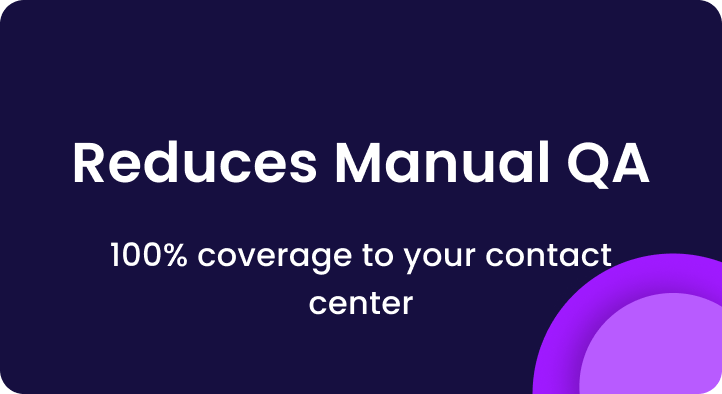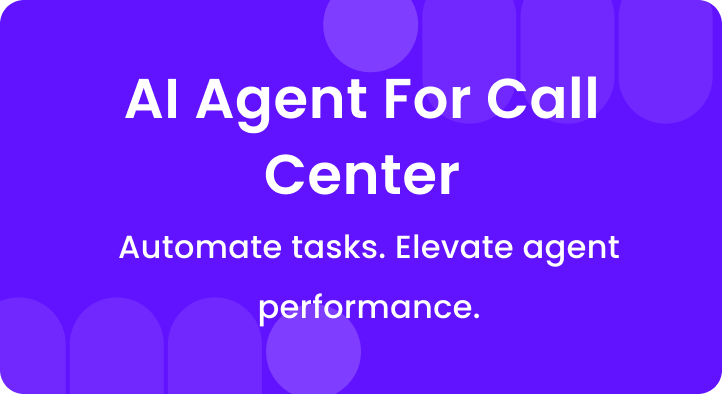You’ve probably called a company to resolve a problem or make a complaint, right? Or maybe you’ve received a call from your bank offering a new credit card. Perhaps you’ve placed an order by phone for food on Uber Eats.
What do all these situations have in common? You’re connecting with a call center.
We interact with call centers in our daily lives more often than we realize.
But what do you picture when you think of a call center? Maybe a large room filled with desks and people talking over each other?
That might have been true in the past, but today’s call centers are much more advanced.
So, what really goes on behind the scenes?
Call centers are vital to modern customer service, playing a key role in boosting customer satisfaction and loyalty.
In this article, we’ll explore what a call center is, its types and how it works?
If you’re thinking about implementing a call center for your business, you’re in the right place. We’ll also cover the latest call center technology that can elevate your operations to the next level.
A. What is call center?
A call center is a centralized office where customer service representatives handle inbound and outbound calls, providing support, information, and resolving issues for customers, often using phone, email, or chat platforms.
Some call centers focus on answering customer inquiries, solving problems and customer satisfaction, while others are aimed at making sales or finding new customers.
When you call a company for help, a call center agent is often the first person to pick up the phone and assist you.
Traditionally, call centers are designed to handle voice calls, where agents answer calls one after another, providing support or information.
However, modern call centers sometimes use automated systems like interactive voice response (IVR) to handle simple questions, like checking store hours or making appointments, without needing a live agent.
However, for more detailed inquiries or complex issues, customers can speak directly to a trained agent who is there to provide solutions and create a positive experience.
Whether helping with problems or making sales, call centers play a key role in delivering good customer service and building strong customer relationships.
When agents are patient, knowledgeable, and ready to help, they provide a positive experience that builds customer loyalty.
B. How does a call center work?
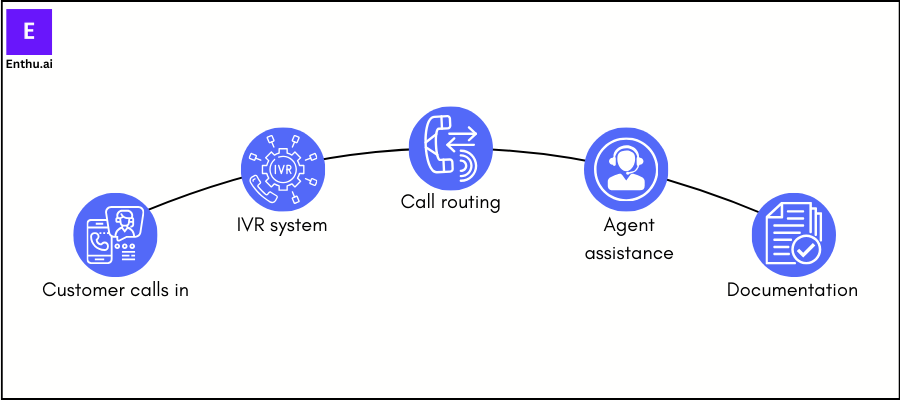
A call center works by connecting customers with agents who help them with their questions or issues. Here’s a simple breakdown of the process:
- Customer calls in: The interaction starts when a customer calls your business, either directly or through an app.
- IVR system: An interactive voice response (IVR) system greets the caller and presents a menu of options.
- Call routing: The system then directs the call to the most suitable agent based on the customer’s needs.
- Agent assistance: Once connected, the agent identifies the customer and their issue. Tools like predictive dialing streamline this process, allowing agents to provide help efficiently while ensuring a pleasant experience.
- Documentation: After the call, the agent records the interaction and any necessary follow-up actions. If the issue isn’t resolved, they will reach out again with updates.
This organized approach ensures customers receive timely support and feel valued throughout the process.
C. Call center VS contact center
While the terms “call center” and “contact center” are often used interchangeably, they’re not quite the same.
A call center focuses only on phone support.
When customers call with questions or issues, agents in the call center are there to help.
Call centers typically handle things like billing inquiries, technical support, or product information.
These centers have agents who sit at desks, answering one phone call after another.
It’s a straightforward way for businesses to manage customer service over the phone.
A contact center, on the other hand, handles customer service through various channels, not just phone calls.
In addition to phone support, a contact center helps customers via email, live chat, social media, messaging apps, and more.
Contact centers are designed to meet customers wherever they prefer to communicate, offering more flexibility and convenience.
As technology advances, many traditional call centers are turning into contact centers to provide better service.
Contact centers use advanced tools like call monitoring, speech analytics, sales coaching & training, and CRM systems to help agents solve issues faster and offer more personalized service.
| Feature | Call Center | Contact Center |
| Primary Channel | Phone calls only | Multiple channels (phone, email, chat, etc.) |
| Communication Methods | Voice calls | Voice, email, chat, social media, SMS, etc. |
| Technology Use | Often limited to phone systems | Uses advanced CRM and multi-channel tools |
| Customer Experience | Focused on resolving issues via phone | Offers more personalized, flexible support |
| Agent Role | Handles phone calls only | Manages interactions across various platforms |
| Customer Preferences | Best for customers who prefer phone calls | Serves a wide range of customer preferences |
D. Types of call center
Given the diverse range of inquiries that callers may have, call centers cannot adopt a one-size-fits-all approach.
Instead, there are various types of call centers tailored to meet the specific requirements of different businesses.
1. Inbound call centers
An inbound call center is a dedicated service that handles incoming customer calls.
Its main job is to assist customers by providing information, support, or solutions related to a company’s products or services.
Typically, inbound call centers are tied to a specific business or organization, and almost all the calls they receive are about that entity.
The agents working in these centers strive to answer questions quickly and efficiently, ensuring customer satisfaction.
How It Works
- Receiving calls: Customers call the center seeking help or information.
- Providing support: An agent answers the call and works to resolve the customer’s issue.
- Customer satisfaction: Ideally, the customer leaves the conversation happy and with their problem solved.
While this sounds straightforward, not every call goes perfectly.
However, the goal remains the same: to address customer needs promptly and pleasantly.
2. Outbound call centers
An outbound call center is a business operation where agents make outgoing calls to customers and potential clients.
Unlike inbound call centers, which handle incoming calls, outbound call centers focus on:
- Generating leads
- Making sales,
- Conducting surveys,
- And providing proactive customer service.
These centers use specialized software and dialing systems to manage high call volumes efficiently.
They aim to personalize interactions and build relationships with customers, helping businesses grow.
By reaching out directly, outbound call centers create opportunities that websites or emails can’t match.
With the right tools, they can improve agent productivity, drive revenue, and gather valuable insights about customer preferences and needs.
3. AI call centers
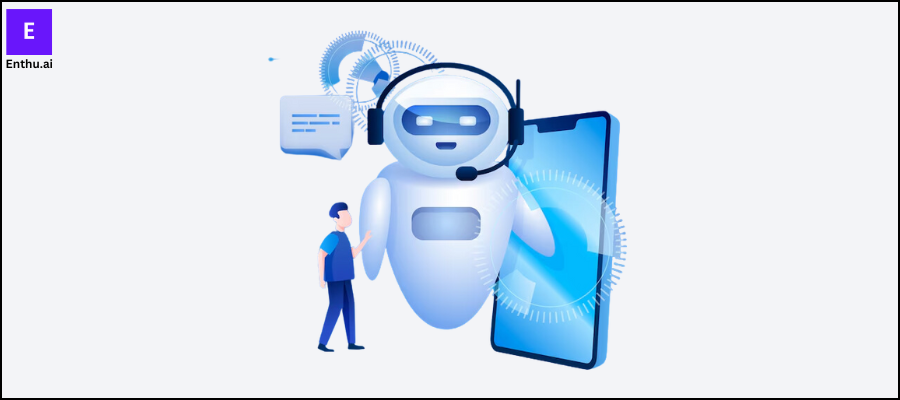
An AI call center is a customer service operation that uses artificial intelligence (AI) technologies to help manage customer inquiries and interactions.
This can happen through phone calls, online chats, and other digital channels.
AI call centers leverage smart technologies to create human-like conversations, making it easier for businesses to meet their customers’ needs.
Today, businesses are leveraging AI-powered call center software within their voice solutions to:
- Record and monitor calls
- Transcribe and analyze calls
- Understand customer sentiments
- Coagh agents and boost their performance
- Generate insights from multiple teams
- Boost retention and revenue
- Deliver more personalized and efficient customer experiences
Some common AI technology that call centers use to perform these tasks are:
- Language language models (LLMs)
- Natural language processing (NLP)
- Natural language understanding (NLU)
- Speech recognition
- Machine learning
4. Virtual call centers
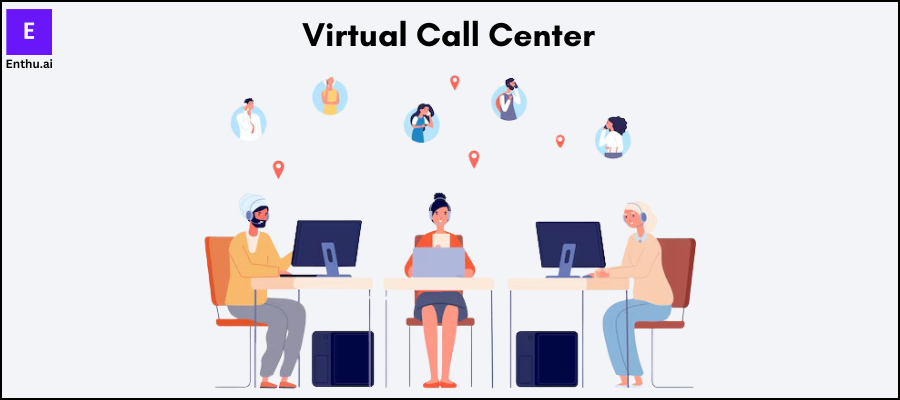
A virtual call center is a modern solution that allows customer service agents to work from anywhere, rather than being tied to a physical office.
This means that agents can handle customer calls from their homes, other locations, or even while traveling, all through the power of technology.
In a virtual call center, agents use specialized software to manage inbound and outbound calls.
This software connects them to customers via the internet, rather than relying on traditional phone lines.
Here are some key features:
- Remote access: Agents can take calls using a laptop, tablet, or smartphone, allowing for flexibility and convenience.
- Call management: Incoming calls are directed to the right agents through a system called Automatic Call Distribution (ACD). This ensures customers reach the help they need quickly.
- Integration: Virtual call centers can easily connect with other business tools, like Customer Relationship Management (CRM) systems, making it easier to keep track of customer interactions.
5. Omnichannel call centers
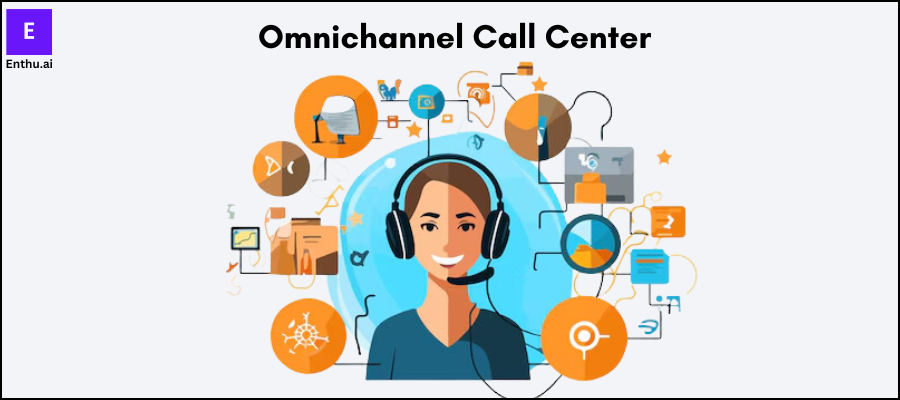
An omnichannel call center is a customer service solution that allows businesses to communicate with customers across multiple channels—like phone calls, chats, emails, texts, and social media—using cloud-based technology.
The key feature of an omni channel call center includes:
- Integrated communication
- Real-time customer interaction
- Comprehensive customer view
- Efficiency and flexibility
- Data-drive improvements
With real-time interaction capabilities, agents can manage multiple customer inquiries simultaneously, reducing wait times and improving satisfaction.
Additionally, omnichannel call centers gather data on customer interactions, helping businesses analyze trends and enhance their services.
E. Common call center technologies
Here are some common AI technologies that you can use in your call center:
(To know more, read in detail our latest article on call center technology)
1. Interactive voice response (IVR)

Interactive Voice Response (IVR) is a common call center technology that allows customers to interact with an automated system using their voice or phone keypad.
It helps callers access information and navigate through menu options without speaking to an agent.
IVR improves efficiency, reduces wait times, and routes calls to the right department when needed.
2. VoIP (Voice over Internet Protocol)
It is a technology that lets users make voice calls over the Internet instead of using traditional phone lines.
It allows calls from computers, smartphones, and special VoIP phones, often including extra features like call recording and voicemail-to-email.
VoIP helps businesses unify communication methods, making it easier for teams to connect through audio, video, and messaging all in one system.
3. Call monitoring and transcription
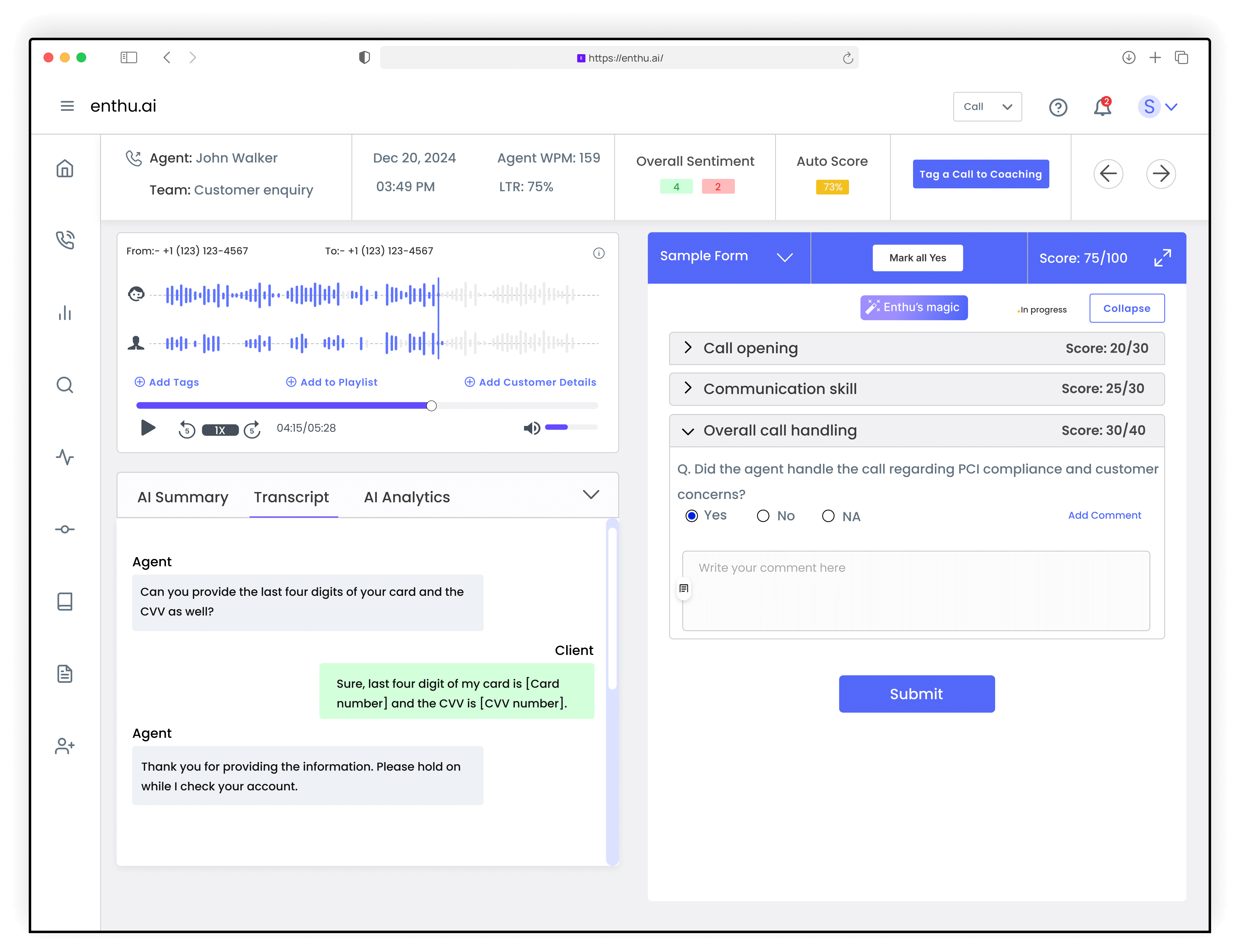
Call monitoring is a technology used in call centers to listen to and evaluate phone conversations between agents and customers.
Supervisors can assess the quality of service provided by agents and ensure they adhere to company standards.
Transcription software turns spoken conversations into written text, making it easier to analyze calls, train staff, and improve customer service.
They enhance quality assurance and provide valuable insights for better communication strategies.
4. Chatbots
Chatbots are automated tools that engage with customers via text or voice on websites, messaging apps, or social media.
They provide quick responses to common inquiries, guide users through processes, and even help with simple transactions.
By handling routine questions, chatbots free up human agents to focus on more complex issues, enhancing customer service efficiency.
5. Omnichannel integration
It refers to the seamless connection of various customer interaction channels, such as phone, email, chat, and social media.
This technology allows customers to switch between channels without losing context, ensuring a smooth and consistent experience.
For call centers, it enables agents to access complete customer histories, improving service quality and response times.
6. Call queuing
Call Queuing is a system that manages incoming calls in a call center by placing them in a queue until an agent is available to assist.
This technology helps prioritize calls based on urgency and ensures that customers are attended to in an organized manner.
It minimizes wait times and improves overall customer satisfaction by providing a structured approach to handling high call volumes.
7. Call analytics
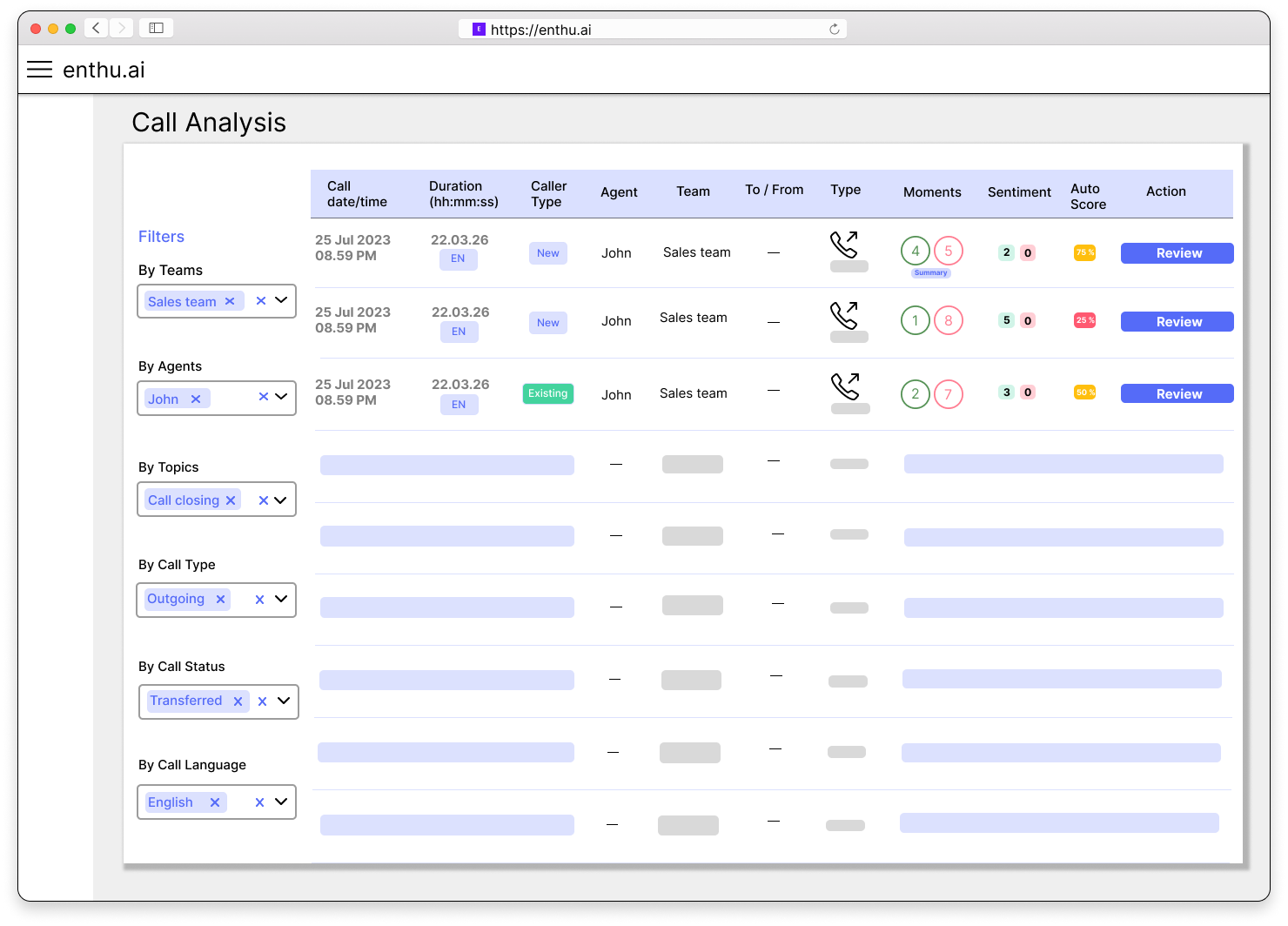
It involves collecting and analyzing data from phone calls to assess performance metrics such as call duration, customer satisfaction, and agent effectiveness.
This technology provides valuable insights into customer interactions, helping organizations identify trends, optimize processes, and enhance the overall customer experience.
By leveraging analytics, call centers can make data-driven decisions to improve their operations.
8. Conversational AI
Conversational AI is an advanced technology that enables machines to understand and respond to human language in a natural way.
This includes chatbots and voice assistants that use natural language processing (NLP) to interact with customers.
Conversational AI tools can handle complex inquiries, learn from interactions, and provide personalized experiences, significantly enhancing customer engagement and support efficiency.
F. How to measure call center success?
If you’re planning to start a call center for your business or already have one, measuring its success is crucial to ensure it’s meeting your goals and providing excellent customer service.
Understanding the right metrics and tools can help you improve performance, enhance customer satisfaction, and ultimately drive revenue.
Key metrics to measure success:
- First call resolution (FCR)
- Average handling time (AHT)
- Customer satisfaction score (CSAT)
- Net promoter score (NPS)
- Agent performance metrics
Read our latest article, “19 Call Center Metrics And KPIs To Watch In 2024” to know about all the key metrics in detail.
Leveraging AI tools can also significantly enhance your ability to measure and improve call center performance.
One such tool is Enthu.AI.
Enthu.AI provides a suite of tools designed to enhance the effectiveness of your call center operations. Here’s how it can help you measure success:
- Automated quality management: Enthu.AI allows you to monitor and evaluate calls at scale. With automated quality assessments, you can ensure agents adhere to protocols and maintain high service standards, enhancing overall quality.
- Real-time insights: By analyzing customer interactions across various channels—like phone calls, chats, and emails—Enthu.AI generates insights that help you understand customer sentiments and identify areas for improvement. This data-driven approach enables you to make informed decisions quickly.
- Coaching and training: Enthu.AI facilitates timely coaching interventions based on performance metrics. You can tailor training programs that turn average performers into top agents by pinpointing where agents struggle, ultimately improving customer experiences.
- Revenue opportunities: The platform automatically surfaces potential revenue opportunities, helping you focus on areas that can drive growth. This feature ensures you’re not just reacting to issues but proactively optimizing your sales processes.
- Seamless integration: Enthu.AI can be integrated into your existing systems quickly, allowing you to start benefiting from its capabilities almost immediately. With minimal setup time, you can start measuring success and driving improvements right away.
Conclusion
I hope you now have a clearer understanding of call centers, their various types, and how they function.
Investing in a call center is essential if you’re a business looking to provide better services, build lasting relationships, offer an excellent customer experience, and ultimately improve sales, profits, and revenue.
In today’s highly competitive and digital world, one effective way to elevate your call center is by using advanced AI-enabled call center technology.
This investment can lead to improved efficiency through automation and better data insights that help you understand customer behavior and preferences.
Additionally, it enhances agent performance with tools for coaching and quality assurance, while providing omnichannel support that allows customers to connect through their preferred channels, creating a seamless experience.
So, seize the chance to revolutionize your business and surpass expectations with a call center solution tailored to your customers and specific needs.
FAQs
1. What is call center in simple words?
A call center is a dedicated team that handles incoming and outgoing phone calls to assist customers with their questions, concerns, or issues related to a company’s products or services.
2. What is call center experience?
Call center experience refers to the interactions customers have when they reach out to a call center, including the quality of service provided by agents, the efficiency of handling inquiries, and the overall satisfaction with the support received.
3. How do call centers work?
Call centers work by connecting customers with trained agents who assist them through a structured process, which typically involves an interactive voice response (IVR) system to route calls, providing solutions or support, and documenting interactions for future reference.

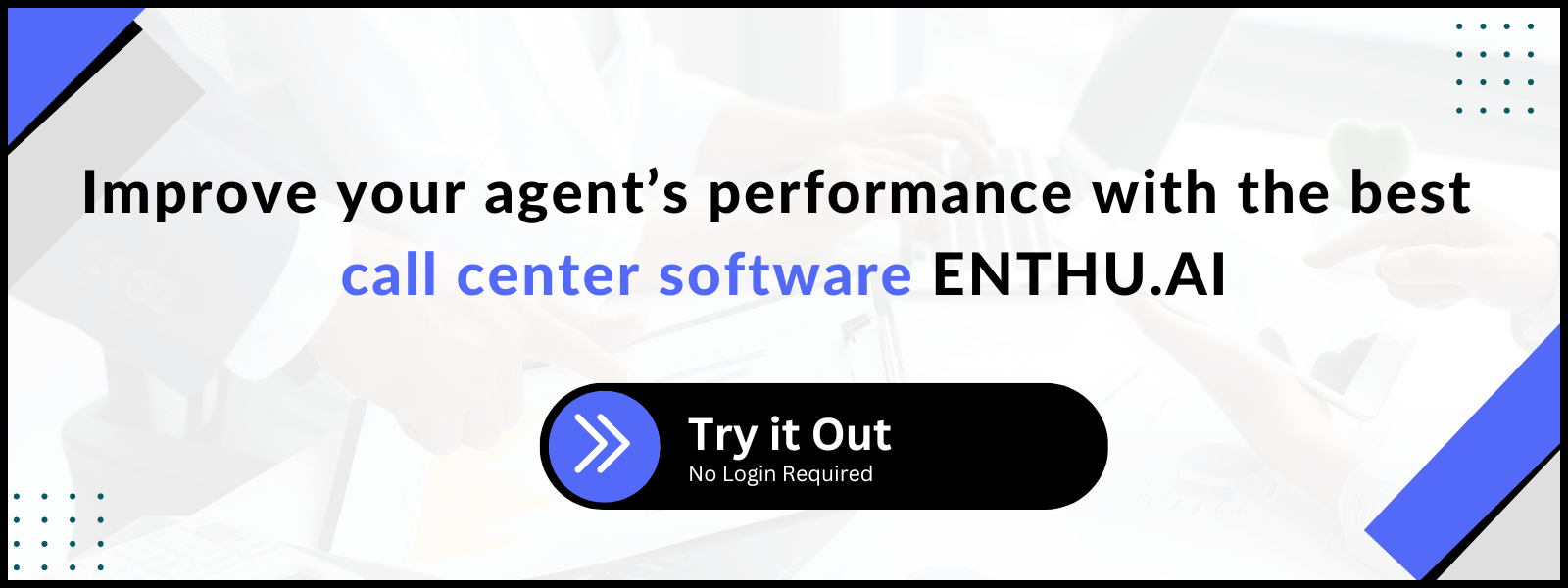


 On this page
On this page